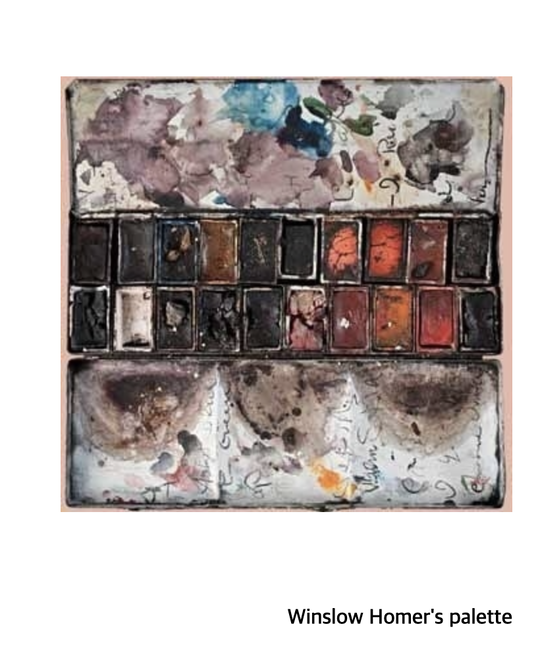Look at nature, work independently, and solve your own problems. by Winslow Homer. Winslow Homer was born in 1836 in Boston, Massachusetts. He became interested in painting under the influence of his mother, who was an amateur watercolorist, and showed his talent for art early on. Homer began working as a freelance illustrator for Harper's Weekly in 1857 and remained active in this field for nearly 20 years. However, with his ambitions as a professional painter, he took evening lectures at the National Academy of Design in the United States, and he also learned painting from a painter named Frederic Rondel. When the Civil War broke out in 1861, he went to the front as a correspondent for Harper's Weekly and recorded battle scenes and the daily lives of Union soldiers in realism. His decisive work that brought Homer to the attention of the art world is 《Prisoners from the Front》 (1866). Based on the experience of the Civil War, this work was painted in oil, but like his other illustrations, it was highly praised for its restrained and bold composition that excluded sentimentality. This work was selected to be exhibited in the United States at the 1867 World's Fair held in Paris. With this as an opportunity, Homer, who went on a trip to Paris, came into contact with the works of modern French painters including Manet and Japanese prints. In the 1870s, Homer painted watercolors exploring the effect of bright, transparent paints. At the time, watercolors were recognized as just a preparatory painting by painters, but Homer was the first artist to exhibit watercolors as a finished work, and watercolors emerged as a major medium of art. He portrayed American life, especially the world of childhood, in a natural and realistic way. And for this, he moved away from city life to a remote coastal area where he could work in peace, painting outdoor landscapes. Indeed, when observing the works of master painters, there is often a fascinating paradox between the apparent ease of their brushstrokes and the profound depth and weight conveyed in their paintings. Masters possess a remarkable ability to create seemingly effortless compositions that captivate and resonate with viewers.
The ease and fluidity apparent in the brushstrokes of masterpieces can be attributed to the years of dedicated practice and honing of their craft. Through countless hours of study, experimentation, and refinement, these artists have developed exceptional technical skills and a deep understanding of their chosen medium. Their mastery allows them to execute complex techniques with apparent simplicity. However, behind the seemingly effortless strokes lies a profound level of thought, intention, and emotional depth. Masters possess an innate ability to distill their artistic vision into powerful visual statements, conveying a wealth of meaning and emotion in their work. Their paintings often carry multiple layers of symbolism, narrative, and personal expression, which contribute to their weight and resonance. The impact of a masterpiece goes beyond technical mastery and aesthetic appeal. It lies in the ability of the artist to communicate on a deeper level, eliciting a range of emotions and provoking contemplation in the viewer. The mastery of these artists enables them to create works that transcend the physical materials and strokes on the canvas, inviting us to delve into the intricacies of the human experience. When we stand before a masterpiece, we are in awe not only of the technical prowess but also of the profound effect it has on us. The combination of apparent ease and immense depth is what makes these works so captivating and awe-inspiring. They remind us of the power of art to evoke emotions, tell stories, and explore the complexities of the human condition.
0 Comments
Leave a Reply. |
Myungja Anna KohArtist Categories
All
Archives
July 2024
|
Proudly powered by Weebly










 RSS Feed
RSS Feed